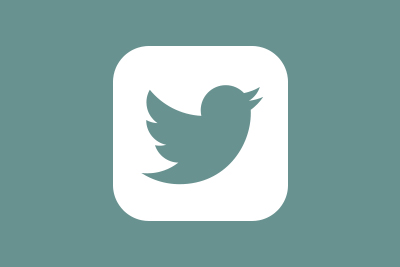Guest Blog | Posted on August 8th, 2022 | return to news
Exploring mental health self-help apps
Guest blog by Anne-Marie Cheung

There are various self-help apps out there to help those suffering from mental health. I wanted to explore apps to help me with anxiety, self-harm and low mood. All the apps I have tried are free of charge. They need to be easy to navigate through, not time-consuming and not too complicated. I have tested them for easy navigation, usefulness, if they work and how they help. The idea behind these apps is to offer comfort and tips in an interesting format that stimulates the mind.

MIND SHIFT
This app is designed to help you cope with anxiety through relaxation. You need to create an account but it is free. When you enter the app there is a checking in section where you click on the face which reflects your mood. You also rate how happy you are feeling out of ten and describe what’s going on in your life. You can also pop in any symptoms you are experiencing. This is done daily to record your anxiety and how it is affecting you. I think it is vital to record your mood and see if there are any patterns. There is a meditation section and one labelled ‘shift your thinking’ which contains coping cards to help ease your mind. These cards can be used anytime anxiety creeps up as a quick reminder that it’s possible to cope. There’s another menu called ground yourself which looks at methods to keep you occupied and distract you from anxious thoughts. The app tries to pinpoint what anxiety you are going through so it can personalise your experience. I found the app easy to navigate through, the short meditation recordings were refreshing, and the daily check-ins offered a release of my emotions.

SAM (self-help for anxiety management)
This app is designed to help control your emotions. Unlike the last app, you don’t need to create an account to use this. It also has a rating of your anxiety but is a bit more in-depth. It rates your feelings, thoughts, avoiding things you fear and unpleasant physical sensations. It also tracks this on a graph so you can monitor your anxiety. It has short meditation recordings, but there aren’t a lot of them so you could easily work through them all. It also has thought bubbles where you record what makes you anxious. I couldn’t understand how to add to the anxiety toolkit. I found the app very simple in presentation and approach. It would be good as a starting point but I would soon get bored with it. The only thing I enjoyed about it is the idea behind tracking your anxiety, I found this useful.

FEAR TOOLS – ANXIETY AID
This app allows you to combat anxiety and aid you on your path to recovery. Again, you don’t need to create an account. The app has a test built into it to assess if you are suffering from anxiety. I’m not sure how useful this is because you would have downloaded the app because you suffer from anxiety. It also has a thought diary to record emotions during certain situations, you can rate your anxiety for that day and choose from a list of unhelpful thoughts. I find jotting down my thoughts really helpful because it can stop worries from going round and round inside my head. It also has a fear section where you jot down your fear and then break it down, to see if you could cope with a lesser version of the fear. The app also has a breath section where you visually see a circle going in and out and you mimic it through breathing. I think this would be useful if you were out and about and had a panic attack. It’s simple and easy to follow. Just like the last app I found this one very simple to use but preferred the presentation of the first app.

CALM HARM
Provides strategies that help you resist the urge to self-harm. Its unique twist is it has a feature called ‘to ride the wave’ which you are supposed to use when you have the urge to self-harm. It then comes up with various options to choose from; comfort, distract, release, and breathe. When you click on the various options it gives you tasks to do and you can decide if they will take five or fifteen minutes. This tool is useful but I found in the moment of wanting to cut it would be hard to shift my thinking and do one of the tasks. You can also jot down your feelings in a journal which is useful. It records the tasks you do so you can pick the best ones. The only annoying thing about the app is putting in my pin all the time. The app is simple to navigate around and doesn’t preach too much by offering an overload of information or tips.

STAY ALIVE
This is designed to help you or someone else stay safe. It’s packed with useful information and self-help to help prevent suicidal attempts and cope with suicidal thoughts. It offers a quick tour to familiarise yourself with the app. It’s another basic app packed full of information. It offers a ‘find help’ section which gives you details of services in your area and who you can reach out to. There’s a section called ‘stay alive’ which offers various tools. There’s a life box where you put photos of your loved ones. You can fill in a safety plan to keep yourself safe. You can also fill in a wellness plan where you pop in positive thoughts and ideas. There is also a breathing tool where you visually see a circle moving in and out that you follow with your breathing. Finally, there’s a section called ‘reasons to live’. This is a checklist of why you should be here. The app also offers advice from thinking about suicide, staying safe, and looking after yourself. The good thing about this app is it’s not just for those thinking about suicide but those who want to help others. The app is simple and useful but could have done with some more activities and tools.

WELL MIND
This app is an all-rounder and can help with anxiety, depression, and stress. The well-being menu allows you to record how you are feeling so you can monitor it. You jot down your mood then record what you are looking forward to, what you have achieved and what you are grateful for. The stress menu has a section called body map which explains how stress affects the body. It also has a section that talks you through five steps to help with stress including meditation tracks. Both the depression and anxiety menus have a similar format where it shows you how the conditions affect the body and five steps to help you. The app gives you useful numbers you can call in a crisis and even has a fun game you can play to distract yourself from your thoughts. While playing the simple snake game, the app notifies you with tips to help yourself recover. Overall, the app was easy to use but I could see myself getting through all the information it offered and not knowing what to do next.

MENTAL HEALTH RECOVERY GUIDE
Offers 17 essential tips to help with the journey to recovery. The app gets you to set an alarm to remind yourself to read the guide daily. It then lists self-help tools that you can click on, like eating fresh fruit and veg, drinking water and exercising daily. I came across one called ‘find blue space’ which explains the therapeutic benefits of being by the water. The app is really easy to navigate around and offers some useful tips. It is only a guide and takes a lot of reading. It is useful in reminding yourself daily to do things to get yourself into a routine, but the app is rather limiting.
All these apps are aimed to help you on your way to recovery, all were easy to navigate around but I found some were wordier and less active in their use of tools. My favourite was Mind Shift because it offered the right balance of information and activities.
Please share post:








